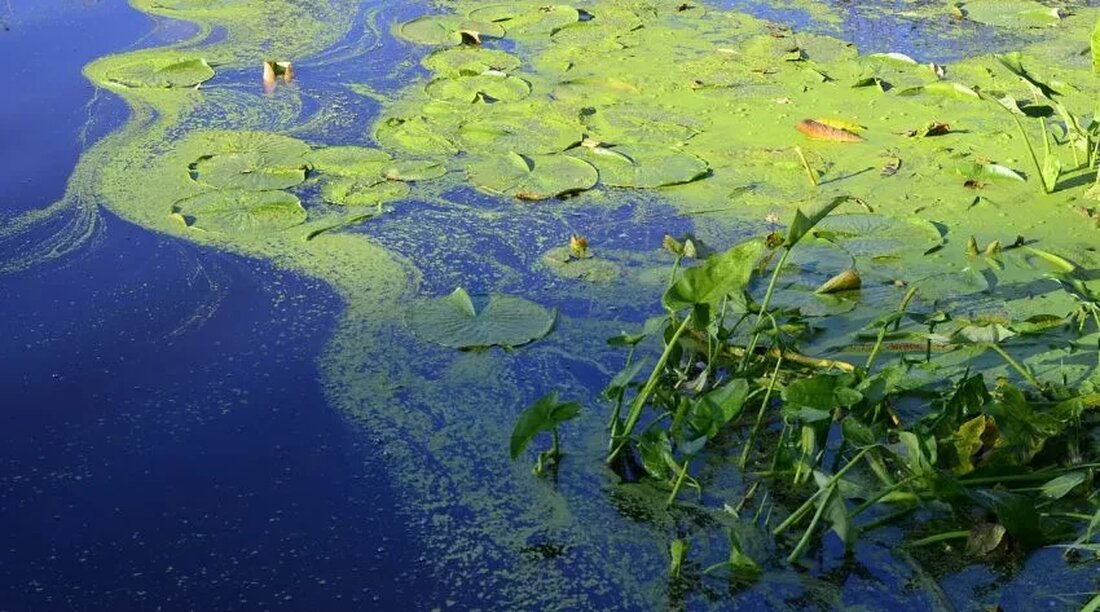Blue-green algae - B12 supplier, over 65 vitamins, minerals, enzymes, amino acids - Toxic by-products & warnings
Organic blue-green algae are one of the most nutrient-dense foods in the world. Two varieties, Spirulina and Aphanizomenon flos-aquae, are the most commonly consumed forms of blue-green algae. This has superfood status due to high concentrations of proteins, vitamins and nutrients. ((Link removed)) How are blue-green algae cultivated? Most blue-green algae products contain Aphanizomenon flos-aquae harvested from Upper Klamath Lake in southern Oregon. The harvest takes place in summer from June to November. The algae are filtered to obtain the most vibrant blooms and then further purified by centrifugation. The AFA is then cooled and frozen or dried at low temperatures and sold as a powder. Natural compounds in organic blue-green algae...

Blue-green algae - B12 supplier, over 65 vitamins, minerals, enzymes, amino acids - Toxic by-products & warnings
Organic blue-green algae are one of the most nutrient-dense foods in the world. Two varieties, Spirulina and Aphanizomenon flos-aquae, are the most commonly consumed forms of blue-green algae. This has superfood status due to high concentrations of proteins, vitamins and nutrients. ((link removed))
How are blue-green algae cultivated?
Most blue-green algae products contain Aphanizomenon flos-aquae harvested from Upper Klamath Lake in southern Oregon. The harvest takes place in summer from June to November. The algae are filtered to obtain the most vibrant blooms and then further purified by centrifugation. The AFA is then cooled and frozen or dried at low temperatures and sold as a powder.
Natural compounds in organic blue-green algae
Blue-green algae consist of 70% vegetable protein and contain more beta-carotene than broccoli. The one-two punch of blue-green algae is that they contain a high concentration of nutrients - over 65 vitamins, minerals and enzymes, as well as the full spectrum of eight essential amino acids and ten non-essential amino acids... and they are readily absorbed by the body. In fact, up to 97% of the beneficial vitamins, minerals and enzymes contained in blue-green algae can be easily absorbed (some supplements are only 5-25% absorbable). AFA also contains the most biologically active chlorophyll of any known food.
Antioxidant activity of blue-green algae
Aphanizomenon flos-aquae is rich in compounds that provide antioxidants. A measurement called “oxygen radical absorption capacity” (ORAC) is used to determine the radical scavenging capacity of foods and other substances claimed to contain antioxidants. The Italian University of Urbino Carlo Bo applied the ORAC method to edible AFA. The result was positive for researchers supporting the use of AFA as an antioxidant supplement to relieve oxidative stress. ((link removed))
The University of Urbino Carlo B conducted another study to evaluate the ability of AFA to protect normal human red blood cells and plasma from oxidative damage. The results suggest that AFA reduced oxidative damage in both cases. In addition, AFA delayed the breakdown of enzymes that are beneficial to the body. ((link removed))
A Japanese study found that a product containing blue-green algae from Lake Klamath had significant antioxidant activity and was an effective adaptogenic product. That is, a substance that helps the body adapt to protect itself from stressors. ((link removed))
Blue-green algae & B12
There is some controversy as to whether or not AFA is an effective source of vitamin B12. Many natural sources of vitamin B12 are biologically deficient. However, preliminary research by the Italian Department of Neurorehabilitation at Villa Salus Hospital evaluated the vitamin B12 levels of 15 vegan subjects supplemented with a seaweed product from Lake Klamath and found that their B12 levels were elevated compared to a control group. Although not conclusive, researchers believed the preliminary research supported the argument that AFA is a reliable source of vitamin B12. ((link removed))
Blue-green algae & stem cells
In adults, stem cells have the function of repairing damaged cells. Unfortunately, as we age, stem cells have a reduced ability to repair themselves and are more susceptible to oxidative stress. This causes the body to be less able to repair itself. Based on previous studies showing that blue-green algae can modulate immune function in animals, USF's Department of Neurosurgery examined the effects of AFA on cultured human stem cells. The researchers noted that preliminary results suggested that an ethanol extract of AFA could promote human stem cell proliferation. ((link removed))
Possible blue-green algae concerns
Although blue-green algae is commonly consumed in the United States, Canada, and Europe, concerns have been raised about the potential of microcystin, a toxic byproduct of blue-green algae. In response, the Oregon Health Division and the Oregon Department of Agriculture have established legal limits for microcystin content in BGA products. Additionally, some research has shown a correlation between beta-methylamino-L-alanine (BMAA) – an amino acid produced by blue-green algae – and some neurodegenerative diseases. ((Link removed), (Link removed))
As with most products, if you are pregnant or breastfeeding, it is a good idea to consult your doctor first before adding blue-green algae.

 Suche
Suche
 Mein Konto
Mein Konto
